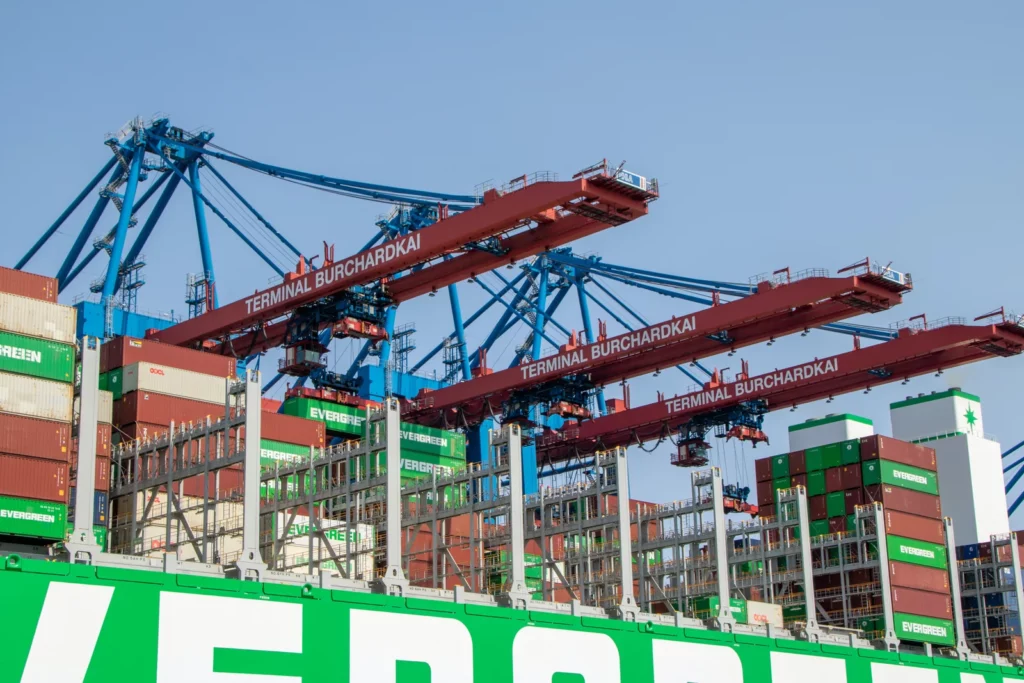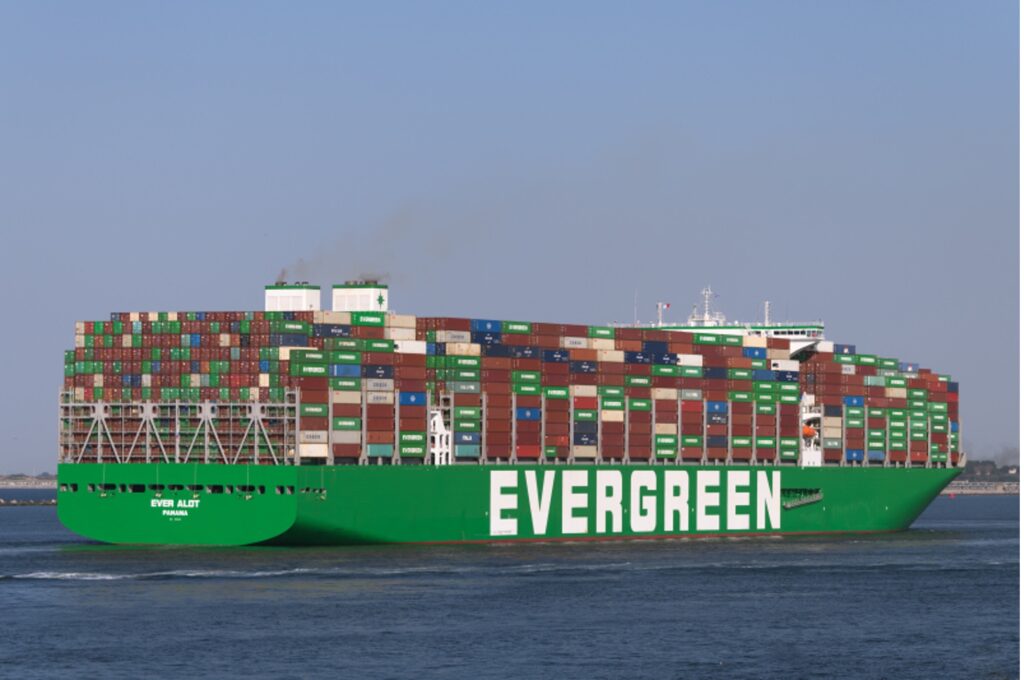Cargo ships are a vital component of global trade, transporting a wide range of goods around the world by sea. One important aspect of cargo ship design and operation is the vessel’s container capacity or the number of shipping containers it can carry.
Container capacity is influenced by a variety of factors, including the size and weight of the vessel, as well as its hull design.
In this article, we will explore these factors and examine the different types of cargo ships, including their typical container capacities. We will also take a look at some of the largest and most impressive cargo ships ever built, including their record-breaking container capacities.

Factors Affecting Container Capacity
There are several factors that can affect the container capacity of a cargo ship, including:
- Size of the vessel: Larger cargo ships can generally carry more containers than smaller ones. This is because they have more deck space available for container stacking, as well as a larger hull to accommodate additional containers.
- Weight of the vessel: The weight of a cargo ship is an important factor in determining its container capacity, as it affects the vessel’s stability and draft (the depth of the ship in the water). If a vessel is too heavy, it may be able to enter only certain ports or navigate certain waterways due to its draft. The largest container ships can operate only between the largest and busiest port in the World.
- Hull design: The shape and design of a cargo ship’s hull can also impact its container capacity. For example, a vessel with a wider beam (width) will be able to carry more containers than one with a narrower beam. Similarly, a ship with a deeper hull may be able to accommodate more containers than one with a shallower hull.
- Type of containers: The type of shipping containers carried on a cargo ship can also affect its capacity. For example, refrigerated containers, which are used to transport perishable goods, are typically larger and heavier than standard dry containers. This means that a vessel carrying refrigerated containers may be able to carry fewer of them compared to a vessel carrying only dry containers.
- Other cargo: In addition to containers, cargo ships may also carry other types of cargo, such as vehicles, bulk materials, or heavy machinery. These items may take up space and weight that could otherwise be used for containers, reducing the vessel’s overall container capacity.
Overall, the container capacity of a cargo ship is the result of a complex balance between these and other factors, with the goal of optimizing the vessel’s cargo capacity and efficiency while also ensuring its stability and safety.
Types Of Container Ships
There are several different types of cargo ships, each with its own typical container capacity:
- Feeder vessels: Feeder vessels are smaller cargo ships that transport containers between ports, often serving as a “feeder” service to larger container ships. These ships typically have container capacities ranging from around 500 to 1,500 TEUs.
- Handysize: Handysize cargo ships are smaller vessels that are typically able to enter smaller ports and navigate shallow waterways. These ships usually have container capacities ranging from around 500 to 2,000 TEUs.
- Handymax: Handymax cargo ships are slightly larger than handysize vessels and have container capacities ranging from around 2,000 to 4,500 TEUs.
- Panamax: Panamax cargo ships are designed to be able to pass through the Panama Canal, which has size restrictions on vessels. As a result, Panamax ships are generally smaller in size and can carry fewer containers compared to larger vessels. Typical container capacities for Panamax ships range from around 4,500 to 6,500 twenty-foot equivalent units (TEUs).
- Post-Panamax: Post-Panamax cargo ships are larger than Panamax vessels and are not restricted by the size limitations of the Panama Canal. These ships typically have container capacities ranging from around 6,500 to 8,500 TEUs.
- Ultra large container vessels (ULCVs): ULCVs are the largest type of cargo ships, with container capacities ranging from around 10,000 to over 20,000 TEUs. These vessels are designed for long-haul routes and can carry an enormous amount of cargo.
It’s worth noting that these are just rough estimates and that actual container capacities can vary depending on the specific vessel and the factors mentioned above (size, weight, hull design, etc.).

Record-breaking Container Ship
Record-breaking container ships are vessels that have achieved impressive feats in terms of their container capacity or other aspects of their design and operation. Some examples of record-breaking container ships include:
- Emma Maersk: The Emma Maersk, built in 2006, was the largest container ship in the world at the time of ship launch, with a container capacity of around 14,770 TEUs. It was also one of the first vessels to be powered by a diesel-electric propulsion system, which made it more efficient and environmentally friendly than previous ships.
- MOL Triumph: Launched in 2017, the MOL Triumph briefly held the title of the largest container ship in the world, with a capacity of around 20,170 TEUs. This vessel is also notable for its advanced technologies, including an energy-saving hull design and a hybrid turbocharger system that improves its efficiency.
- Madrid Maersk: Launched in 2017, the Madrid Maersk was briefly the largest container ship in the world, with a capacity of around 20,568 TEUs. This vessel is also notable for its innovative design, which includes a “twin skeg” propulsion system that improves its fuel efficiency and reduces its emissions.
- CMA CGM Antoine de Saint Exupéry: Launched in 2018, the CMA CGM Antoine de Saint Exupéry is one of the largest container ships in the world, with a capacity of around 20,954 TEUs. This vessel is also notable for its advanced technologies, including a hybrid scrubber system that helps to reduce its co2 emissions.
- OOCL Hong Kong: The OOCL Hong Kong, built in 2017, is currently the largest container ship in the world, with a container capacity of around 21,413 TEUs. It is also one of the most fuel-efficient vessels of its size, thanks to its advanced hull design and propulsion system.
- COSCO Shipping Universe: Launched in 2018, the COSCO Shipping Universe briefly held the title of the largest container ship in the world, with a capacity of around 21,237 TEUs. This vessel is also notable for its advanced technologies, including a fuel-efficient main engine and a waste heat recovery system that helps to reduce its emissions.
- MSC Gülsün: The MSC Gülsün, built in 2019, is currently the second-largest container ship in the world, with a container capacity of around 23,756 TEUs. It is also one of the most eco-friendly vessels of its size, with advanced technologies to reduce its carbon emissions and other environmental impacts.
- Ever Alot: Ever Alot is the world’s largest container ship as of 2022. It was built by China’s Hudong-Zhonghua Shipbuilding Co for Evergreen Marine Corporation. The ship has a carrying capacity of 24,004 TEU (twenty-foot equivalent units) and measures 400 meters in length and 61.5 meters in width, with a draft of 17 meters. Ever Alot broke the record for the world’s largest container ship, previously held by Ever Ace, another Evergreen-flagged vessel. The ship was launched in June 2022 and was delivered on June 22, 2022, in Shanghai, China.
- MSC Irina and MSC Loreto: MSC Irina and MSC Loreto container ships, which were built in China and launched in 2023. These vessels are reported to have a capacity of 24,346 TEUs, which would make them among the largest container ships in the world. However, it is worth noting that there are several other container ships with similar or larger capacities, including the HMM Algeciras and the OOCL Hong Kong. Nonetheless, the launch of the MSC Irina and MSC Loreto reflects the ongoing trend towards larger and more efficient container ships, as shipping companies seek to meet the growing demand for global trade while also reducing their environmental impact.
These are just a few examples of record-breaking container ships. There have been many other impressive vessels built over the years, and it is likely that we will see even larger and more advanced cargo ships in the future.
As of 2021, the largest container ship in the world is the OOCL Hong Kong, with a container capacity of around 21,000 twenty-foot equivalent units (TEUs). The OOCL Hong Kong was built in 2017 and is owned and operated by the shipping company OOCL. It is a very large vessel, measuring over 400 meters in length and 60 meters in width.
It’s worth noting that container ship sizes and capacities can vary over time, and it is possible that there may be other large vessels built in the future that surpass the OOCL Hong Kong in terms of size and capacity. The shipping industry is constantly evolving, and new technologies and designs are being developed that could potentially lead to even larger and more efficient cargo ships.
The Ever Ace is a large container ship with a capacity of around 19,000 twenty-foot equivalent units (TEUs). It was built in 2017 and is owned and operated by the shipping company Evergreen Marine Corporation.
In terms of size, the Ever Ace measures around 400 meters in length and 58 meters in width, making it a very large vessel. It is capable of transporting a significant amount of cargo across the world’s oceans.
It’s worth noting that container ship sizes and capacities can vary, and it is possible that the Ever Ace’s size and capacity may have changed since it was built. As with any large vessel, the exact dimensions of the Ever Ace will depend on its specific design and the requirements of its owner and operator.
In conclusion, container capacity is a critical factor in the design and operation of cargo ships. Larger vessels can carry more containers, which allows them to transport more goods and potentially increase their efficiency and profitability. However, there are many factors that can influence a cargo ship’s container capacity, including its size, weight, hull design, and the type of containers being carried.
There are also several different types of cargo ships, each with its own typical container capacity. Panamax ships are smaller vessels that are restricted by the size limitations of the Panama Canal, while post-panamax ships are larger and able to carry more containers. Ultra large container vessels (ULCVs) are the largest type of cargo ships, with capacities ranging from around 10,000 to over 20,000 TEUs.
There have been many impressive and record-breaking cargo ships built over the years, including the Emma Maersk, the OOCL Hong Kong, and the MSC Gülsün. These vessels demonstrate the potential for further increases in container capacity in the future. As the shipping industry continues to evolve, it is likely that we will see even larger and more advanced cargo ships being built to meet the growing demand for global trade.
- Types of Gas Carriers as per IGC Code – April 22, 2025
- Wind-Assisted Propulsion Systems (WAPS): A Game Changer for Maritime Decarbonization – February 6, 2025
- 10 Boat Salvage Yards in California – January 25, 2025





